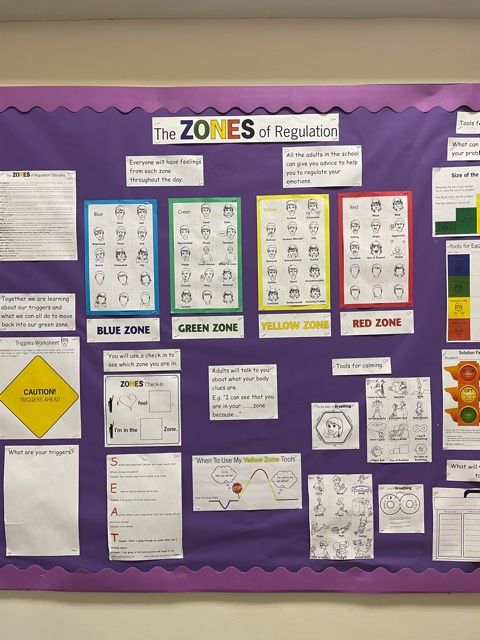Zones of Regulation
Self-regulation is something everyone continually works on whether or not we are aware of it or not. We all encounter trying circumstances that test our limits from time to time. If we are able to recognise when we are becoming less regulated, we are able to do something about it to manage our feelings and get ourselves to a healthy place.
This comes naturally for some, but for others it is a skill that needs to be taught and practiced. This is the goal of The Zones of Regulation (or Zones for short).
What are the Zones?
The zones is a systematic, cognitive behavioural approach used to teach self-regulation by categorising all the different ways to teach self regulation by categorising all the different ways we feel and states of alertness we experience into four concrete coloured zones.
The zones framework provides strategies to teach students to become more aware of and independent in controlling their emotions and impulses, manage their sensory needs, and improve their ability to problem solve conflict situations.
By addressing underlying deficits the framework is designed to help move students toward independent regulation.
The Four Zones
The Red Zone is used to describe extremely heightened states of alertness and intense emotions. A person may be elated or experiencing anger, rage, devastation, or terror when in the Red Zone.
The Yellow Zone is also used to describe a heightened state of alertness and elevated emotions, however one has more control when they are in the yellow zone. A person may be experiencing stress, frustration, anxiety, excitement, silliness, the wiggles or nervousness when in the yellow zone.
The Green Zone is used to describe a calm state of alertness. A person may be described as happy, focused, content, or ready to learn when in the green zone. This is the zone where optimal learning occurs.
The Blue zone is used to describe low states of alertness and down feelings such as when one feels sad, tired, sick or bored.
The Zones can be compared to traffic signs.
When given a green light or in the Green Zone, one is “good to go”. A yellow sign means be aware or take caution, which applies to the Yellow Zone. A red light or stop sign means stop, and when one is the Red Zone this often is the case. The Blue Zone can be compared to the rest area signs where one goes to rest or re-energise.
All of the zones are natural to experience, but the framework focuses on teaching students how to recognise and manage their Zone based on the environment and its demands and the people around them. For example, when playing on the playground or in an active/competitive game, students are often experiencing a heightened internal state such as silliness or excitement and are in the Yellow Zone, but it may not need to be managed. However, if the environment is changed to the library where there are different expectations than the playground, students may still be in the Yellow Zone but have to manage it differently so their behaviour meets the expectations of the library setting.


